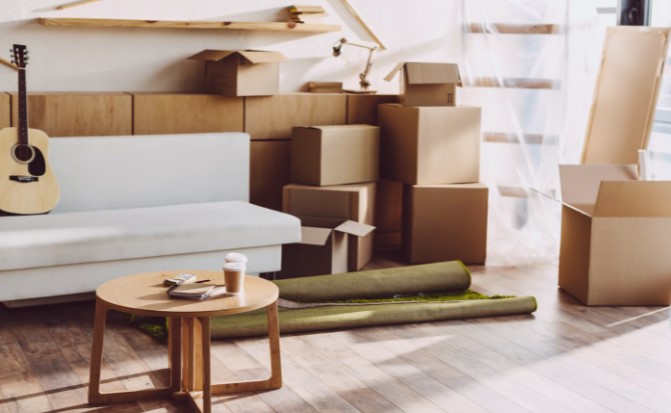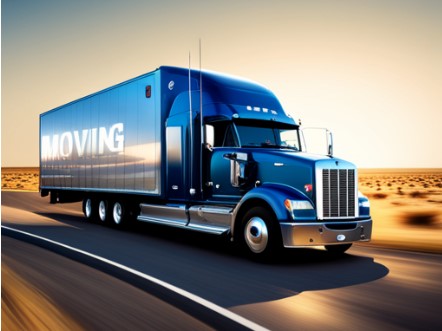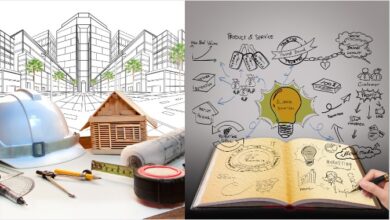
Ah, moving! It’s a word that can evoke a mix of emotions: excitement for the new chapters awaiting, anxiety over the sheer amount of tasks, and nostalgia for the memories created in your current abode. Whether you’re moving down the street or across the globe, every move comes with its unique set of challenges and joys. Our comprehensive Moving Guide is designed to be your trusty companion in this journey, offering insights, tips, and expert advice to ensure your transition is as smooth as silk. So, before you dive into those boxes and packing tapes, take a moment to arm yourself with knowledge that will transform your moving experience from daunting to delightful. Welcome to your ultimate moving roadmap!
The Why of Moving
Understanding the reasons behind the decision to move is crucial as it forms the foundation of the relocation process. People move for various reasons, each unique and significant in its own way.
Motivations behind Moving
Career Opportunities: One of the primary motivators for people to move is the pursuit of better career opportunities. A new job or a promotion that requires relocation can be a significant impetus for moving.
Education: For some, the pursuit of education can necessitate a move. It could be a university or a specialized institution that draws students from different locations.
Family: Family considerations, such as being closer to relatives, moving in with a partner, or finding a suitable place to raise children, can also be substantial motivators behind the decision to move.
Lifestyle: Sometimes, people move in search of a different lifestyle. It could be a move from a bustling city to a peaceful countryside or vice versa, based on one’s preferences and life stage.
Housing: Seeking a better living arrangement is another common reason for moving. It could be to move to a bigger house, downsize, or become a homeowner.
Each person’s moving motivation will be influenced by their personal circumstances and priorities. Identifying and understanding this motivation can help make the moving process smoother and more meaningful.
Understanding the Emotional Roller-coaster
The act of moving, while logistical in nature, carries with it a plethora of emotions. Think about it: you’re not just shifting boxes and furniture; you’re transitioning from one phase of life to another. Here’s a deeper dive into the emotional journey many undergo when moving:
Excitement: The prospect of a fresh start often brings a wave of excitement. Whether it’s a new city, a bigger house, or just a change of scenery, the unknown can be thrilling. It’s the chance to redecorate, meet new neighbors, and explore new surroundings.
Sadness: Along with the anticipation of the new, there’s a palpable sense of saying goodbye to the familiar. Leaving behind cherished memories, friends, and places can tug at the heartstrings. It’s not just about parting with a physical location but the experiences and moments associated with it.
Anxiety: Moving is often ranked among life’s most stressful events. There’s a natural anxiety that comes with change. Questions like “Will I fit in?”, “What if things don’t work out?”, and “Have I made the right decision?” can cloud one’s mind.
Overwhelm: The logistics of moving can be overwhelming. Packing, decluttering, setting up utilities in the new place, and the endless checklist can be daunting.
Hope: At the core of every move is a sense of hope. Hope for better opportunities, a richer life, and new experiences. This optimism often fuels the move, pushing individuals through the challenges.

Remember, every emotion you feel during a move is valid. It’s a transformative experience, akin to turning the pages of a book, eagerly anticipating the next chapter. And while the narrative might be filled with ups and downs, it’s the journey that shapes the story. Embrace each emotion, lean on your support system, and give yourself grace during this transitional phase. After all, every ending is a new beginning, right?
Planning Your Move
Proper planning is the backbone of any successful move. It ensures a smoother transition, reduces stress, and can even save you money. Here’s a closer look at how to effectively plan your move:
Setting a Moving Date
Choosing the right moving date is more than just circling a day on the calendar. It’s about strategizing to ensure the process aligns with your convenience, budget, and other obligations.
- Flexibility: If you can, be a bit flexible with your moving date. This allows you to capitalize on better rates and availability from moving companies.
- Avoiding High Traffic: Weekends, holidays, and the beginning or end of the month are popular moving times. Opting for a mid-week or mid-month move can be less hectic and sometimes cheaper.
- Weather Considerations: While it’s not always in our control, considering the season and weather can be beneficial. For instance, moving during a less busy season like fall or winter (depending on your location) might offer cost benefits.
Creating a Checklist
Having a clear, comprehensive moving checklist is akin to having a roadmap for your journey. It provides direction, ensures tasks aren’t forgotten, and offers a sense of accomplishment as you check off tasks.
- Segment by Time: Break down tasks based on how far out from the move they need to be completed. For instance, 8 weeks out, 6 weeks out, a month out, etc.
- Prioritize: There are always some tasks that are more urgent or crucial than others. Make sure they are at the top of your list.
- Digital vs. Physical: Whether you’re the tech-savvy type who prefers a digital checklist or old-school and love the feeling of physically ticking off tasks, choose a format that’s most effective for you.
Necessary Supplies
Gathering all necessary supplies in advance saves you the last-minute scramble and ensures your belongings are packed securely.
- Boxes, Boxes, Boxes: Invest in sturdy boxes of various sizes. Specialized boxes, like wardrobe boxes or dish barrels, can be handy for specific items.
- Protective Materials: Bubble wrap, packing peanuts, and newspaper are great for wrapping fragile items. Don’t underestimate the value of old linens or towels as protective layers either.
- Tape and Labels: Heavy-duty packing tape ensures your boxes stay sealed. Labels or colored markers can help in categorizing and identifying contents.
By planning efficiently and in advance, you set yourself up for a less chaotic, more streamlined moving experience. The key lies in being proactive, detailed, and strategic in your approach. And remember, every big journey begins with detailed planning, and moving is no exception!
Choosing the Right Movers
electing the right moving company can make the difference between a smooth transition and a moving nightmare. It’s crucial to do your homework before committing. Here are some essential steps to help you make an informed decision:
Comparing Quotes
Getting a good price is essential, but understanding what’s included in that price is even more critical.
- Multiple Estimates: Reach out to at least three reputable moving companies for quotes. This will give you a ballpark idea of what the market rate is and what different services are offered at what price points.
- Itemized List: Ensure that each quote is detailed with itemized costs. It helps in comparing the services provided by each company and avoids hidden charges.
- Value over Cost: While the instinct might be to go for the cheapest option, it’s essential to weigh the quality of service offered. Sometimes, a slightly more expensive mover can provide a significantly better moving experience.
Checking Reviews
In the digital age, reviews and testimonials provide invaluable insight into a company’s credibility and the quality of its services.
- Online Platforms: Websites like Yelp, Google Reviews, and Better Business Bureau are excellent places to start. These platforms provide real customer reviews, both positive and negative.
- Word of Mouth: Ask friends, family, or colleagues for their experiences. Personal recommendations can often be more trustworthy than online reviews.
- Red Flags: Keep an eye out for any recurring complaints or issues mentioned by multiple customers. These can be indicators of larger problems within the company.

Additionally, don’t be shy to ask potential movers for references. Reputable companies will be more than happy to provide contacts of satisfied customers. Remember, moving your belongings is a big deal. You’re entrusting a company with your memories, valuables, and a significant part of your life. So, take your time, do your research, and choose a mover that aligns best with your needs and comfort level. After all, the right movers can turn the daunting task of relocating into a breezy affair!
Moving Packing Tips
Packing is arguably one of the most tedious parts of the moving process. However, with the right tips and strategies, it can be efficient and even enjoyable. Here are some tried-and-true packing tips to streamline your move:
1. Start Early
The earlier you begin, the less rushed you’ll feel. Starting well in advance gives you the luxury of packing at a relaxed pace and makes the process less stressful.
2. Declutter First
Before you even bring out the boxes, take the time to declutter. Sort through your belongings and decide what you truly need. Donate, sell, or recycle items you no longer use. This reduces the volume of items you have to pack and move.
3. Gather Supplies
Invest in good quality packing materials. This includes:
- Sturdy boxes of various sizes.
- Bubble wrap for fragile items.
- Packing tape.
- Markers for labeling.
- Packing paper or newspaper.
4. Use the Right Box Size
Heavy items like books should go in smaller boxes, while lighter items like linens and pillows can go in bigger boxes. This ensures boxes aren’t too heavy to lift and minimizes the risk of them breaking.
5. Pack Room-by-Room
Focus on one room at a time. This helps maintain organization, and you’ll get a sense of accomplishment as you finish each room.
6. Label Clearly
Label each box with its contents and the room it belongs to. This not only helps during the unpacking process but also ensures movers know which room to place each box in.
7. Protect Fragile Items
Use bubble wrap, towels, or linens to wrap fragile items. Clearly mark these boxes as ‘FRAGILE’ on all sides.
8. Use Clothing to Wrap
Instead of packing away all your clothing first, use them to wrap fragile items. It saves on bubble wrap and makes efficient use of space!
9. Seal Boxes Well
Ensure every box is sealed tightly with packing tape to prevent items from falling out during the move.
10. Pack an Essentials Box
Create an essentials box with items you’ll need immediately upon arriving at your new home – toiletries, a change of clothes, important documents, medications, and some snacks. This way, you won’t be rummaging through multiple boxes on your first night.
11. Take Photos of Electronic Setups
Before disconnecting your electronics, take a photo of the setup. This will serve as a reference when you’re setting them up again in your new place.
12. Keep Valuables Close
Important documents, jewelry, and other valuables should be packed separately and kept with you during the move.

In conclusion, while packing might seem daunting initially, with a bit of organization, strategy, and the right tools, it can be a breeze. The key is to approach it methodically and to remember that every item packed gets you one step closer to your exciting new journey. Happy packing!
Moving Cost Calculator for Moving Estimates
Here’s a table to give you an idea of moving prices based on home size, number of movers, number of hours, and average total cost. Please note, these figures are hypothetical and are meant to serve as a general representation. Actual costs will vary based on various factors including location, moving company, and specific services requested.
Understanding the Cost of a Local Move
Relocating within the same town or just shifting to the adjacent neighborhood? This type of relocation is termed a local move. The cost of such moves varies depending on several factors, especially the size of your living space and the volume of items you’re transporting. For instance, moving a studio or one-bedroom place might cost you anywhere between $499 and $992. Below is a more detailed breakdown:
Local Move Cost Breakdown
Navigating the costs associated with a local move can be tricky, but to make things clearer, here’s a table breaking down the average expenses based on the size of your home:
| Home Size | Average Cost |
|---|---|
| Studio-1 Bedroom | $499 – $992 |
| 2-3 Bedroom | $978 – $1,835 |
| 4-5 Bedroom | $1,897 – $2,875 |
It’s crucial to remember that these costs are approximate averages and might vary depending on the moving company, the distance of the move, and any additional services you opt for. Always get multiple quotes to ensure you’re getting the best deal for your specific needs.
Hourly Rates for Movers: What You Should Expect
When you’re opting for a labor-only moving service, the costs usually range from $35 to $70 for each mover, per hour, for local relocations. As an example, if you’re hiring two movers for a duration of four hours, you’d be looking at an average expense of around $435. Below is a table that provides a clearer breakdown of the potential costs, considering the common hourly rate of $50 for each mover.
Moving Prices
| Home Size | # of Movers | # of Hours | Average Total Cost |
|---|---|---|---|
| Studio/1BR | 2 | 4-6 | $235 – $375 |
| 2BR Apartment | 3 | 5-7 | $355 – $555 |
| 3BR Apartment | 4 | 7-10 | $540 – $780 |
| 2BR House | 3 | 6-8 | $430 – $590 |
| 3-4BR House | 4-5 | 8-12 | $620 – $1,150 |
| 5+BR House | 6+ | 10-15 | $1,050 – $2,550 |
Deciphering Long Distance Move Costs
Relocating to a distant locale? Such moves, unsurprisingly, come with a higher price tag. Why? Long distance moving services need to incorporate expenses like fuel charges, road tolls, and driver compensation into their fees. As a general rule of thumb, you can anticipate long-distance moving costs to be anywhere between $1,025 and a hefty $15,201. The final amount primarily hinges on the travel distance and the sheer volume of belongings you’re transferring.
Long Distance Move Costs Breakdown
If you’re gearing up for a long-distance move, understanding the potential costs is essential. Here’s a handy table that breaks down the average expenses based on both the distance of the move and the size of your home:
| # of Miles | Studio-1 Bedroom | 2-3 Bedroom | 4-5 Bedroom |
|---|---|---|---|
| Up to 300 | $1,123 – $2,456 | $2,500 – $4,875 | $5,000 – $8,234 |
| 300-800 | $2,657 – $4,980 | $5,125 – $8,536 | $8,550 – $12,879 |
| 800-1,500 | $5,012 – $7,123 | $7,534 – $11,675 | $12,000 – $16,567 |
| Over 1,500 | $7,234 – $9,456 | $10,345 – $13,789 | $14,567 – $19,234 |
It’s crucial to bear in mind that the figures presented are rough estimates. The actual costs can diverge based on factors such as the specific moving company chosen, additional services availed, and other logistical considerations.
How to Calculate Moving Costs
Relocating, be it across town or across the country, comes with its set of expenses. Properly estimating these costs can save you from unexpected financial hiccups. Here’s a step-by-step guide to help you calculate moving costs:
1. Determine the Type of Move:
- Local Move: Typically charged by the hour.
- Long Distance Move: Cost usually depends on the weight of your belongings and the distance.
2. Inventory Your Items: List everything you plan to move. The more items and the heavier they are, the more you’ll likely pay.
3. Consider Special Items: Pianos, antiques, and artworks often require special handling and might have additional fees.
4. Get Quotes:
- Multiple Estimates: Always get at least three estimates from reputable moving companies to compare.
- Binding vs. Non-Binding: A binding estimate guarantees the cost based on the inventory, while a non-binding one can change depending on the actual move.
5. Factor in Additional Services:
- Packing Services: Some prefer the convenience of having the movers pack.
- Insurance: Basic coverage might be included, but consider getting full-value protection if you have valuable items.
6. Account for Moving Supplies: Boxes, packing tape, bubble wrap, and specialty containers can add up. Consider either buying or renting.
7. Consider Storage Costs: If there’s a gap between moving out and moving in, you might need temporary storage.
8. Remember Travel Expenses: If you’re moving long distance, don’t forget costs like gas, hotel stays, and meals.
9. Factor in Post-Move Expenses: Setting up utilities, buying new furniture, or home improvements should also be in your budget.
10. Don’t Forget the Incidentals: Things like tips for movers, snacks for moving day, and other miscellaneous costs can slip through the cracks but can add up.
11. Create a Moving Budget: Once you’ve gathered all the data, draft a comprehensive budget. This gives you a clear financial picture and helps avoid unexpected surprises.

Moving is a significant undertaking, both emotionally and financially. Having a clear understanding of the costs involved will not only prevent financial strain but also provide peace of mind during this transitional phase.
Additional Moving Costs and Fees to Consider
While the main expense of moving is often the movers themselves, there are many ancillary costs that can easily go overlooked. These can sneak up on you and turn what seemed like an affordable move into a costly affair. Let’s dive into some of these often-overlooked expenses to ensure you’re fully prepared:
1. Packing Materials:
- Boxes: Different sizes for various items. Specialty boxes, like wardrobe or dish boxes, can be pricier.
- Bubble Wrap & Packing Peanuts: Essential for fragile items.
- Packing Tape & Dispenser: Secures the boxes.
- Stretch Wrap: For furniture and large items.
2. Specialty Moving Services:
- Art & Antiques: These require custom crating.
- Piano Moving: Pianos are heavy and delicate, needing special equipment.
- Pool Tables: Often require disassembly and reassembly.
3. Moving Insurance: While your moving company will offer basic liability coverage, it may not be enough for valuable items. Consider:
- Full-Value Protection: A more comprehensive coverage.
- Third-Party Insurance: Especially if the mover’s insurance is insufficient.
4. Temporary Storage: If there’s a gap between your move-out and move-in dates, you might need a storage unit.
5. Disconnecting and Connecting Services: Fees might be charged for:
- Utilities: Gas, water, electricity.
- Cable & Internet: Setup and termination fees can apply.
6. Travel Expenses: If you’re moving long-distance, factor in:
- Fuel: Especially if driving your own vehicle.
- Lodging: Hotels or motels along the route.
- Meals: Eating out can add up.
7. Vehicle Transportation: If you’re not driving to your new home, you’ll need to ship your car.
8. Gratuities: While not mandatory, it’s customary to tip your movers, especially if they did a stellar job.
9. Cleaning Services: You might need to deep clean your old place, especially if you’re trying to get a deposit back or prepare a home for sale.
10. Unforeseen Emergency Costs: Accidents happen. Whether it’s a broken piece of furniture or a vehicle issue, always have an emergency fund.
In Conclusion: When budgeting for a move, it’s critical to consider every potential cost, not just the obvious ones. This comprehensive approach ensures you’re not caught off guard and can transition smoothly to your new home.
A move, regardless of distance, is a significant event. By being mindful of these additional costs, you can ensure the process is as stress-free as possible.
After Moving: Making the New Place Feel Like Home
While moving can be an exhilarating adventure, settling into an unfamiliar space can feel a bit daunting. But with a little effort and creativity, you can quickly transform your new house into a home. Here’s how:
1. Unpack Essentials First
Start by unpacking the essentials. Set up your bedroom, get the kitchen functional, and ensure the bathroom has all the necessities. By establishing these core spaces first, you’ll immediately feel more settled.
2. Add Personal Touches
Personal items have a way of infusing warmth and familiarity into any space.
- Photos: Displaying cherished memories around your home can instantly make it feel personal. Whether it’s family portraits, holiday snapshots, or even a favorite piece of artwork, these visuals serve as comforting reminders of happy times.
- Curtains and Rugs: While the walls and floors of your new home might be unfamiliar, draping them with familiar curtains or laying down your favorite rug can make a world of difference. They not only add color and texture but also introduce a sense of your personal style.
- Scents: Familiar smells have an incredible way of evoking memories and feelings. Light your favorite candle, use a familiar air freshener, or bake something you love. Your new place will soon smell like home.
3. Organize Gradually
Don’t feel pressured to have everything perfectly organized right away. Take your time to decide where things should go, how furniture should be arranged, and which drawer should house what.
4. Host a Housewarming Party
Once you’re somewhat settled, invite over a few friends or neighbors. Sharing your new space can make it feel more lived-in and cozy.
5. Get to Know the Neighborhood
Familiarize yourself with your new surroundings. Visit local shops, cafes, parks, or community centers. As you grow accustomed to your new environment, your home will start to feel like a central part of a familiar setting.
6. Customize the Space
If you can (and if it’s allowed), paint walls in colors you love, add shelving, or make any other changes that reflect your personal taste. This active involvement in customizing your space can help forge a bond with your new home.
7. Continue Old Routines
Consistency can be comforting. Whether it’s a Sunday movie night, a morning coffee routine, or any other ritual, keep it going in your new place.
8. Bring in Plants
Plants have a unique way of making spaces feel alive and homely. Whether you’re a fan of large indoor plants, succulents, or fresh flowers, greenery can rejuvenate and bring warmth to your home.
9. Play Familiar Tunes
Music is a powerful mood setter. Play your favorite songs or background music you love. It will not only lift your spirits but also make your space feel more personal.
In conclusion, making a new place feel like home is all about blending the familiar with the new. It’s an exciting journey of discovery, customization, and establishing roots. With every personal touch, you’ll find that your new house isn’t just a place to stay – it’s a reflection of who you are. Welcome home!

Settling In: Unpacking with Ease After Moving
After the rigorous process of moving, the sight of piled-up boxes might seem overwhelming. However, the key to stress-free unpacking lies in strategy and patience. Here are some insights to help you approach the unpacking process with ease and efficiency:
1. Prioritize Essentials
First Night Box: Hopefully, you’ve packed an essentials or ‘first night’ box that includes necessities for the initial 24 hours in your new home. This box should be unpacked first, ensuring you have access to items like toiletries, a change of clothes, important documents, and some essential kitchenware.
2. Plan the Layout
Before diving into the boxes, take a moment to walk through your new space. Envision where you’d like your furniture and how you’d like each room to look. Having a mental blueprint will streamline the unpacking process and help you decide which boxes to tackle first.
3. Tackle One Room at a Time
Break the process down by focusing on one room or area. Fully unpacking and setting up one room gives you a functional space to relax in and offers a sense of accomplishment.
4. Unpack Large Items First
This includes furniture and other bulky items. Once these are in place, it becomes easier to visualize where smaller items will go.
5. Embrace the Mantra: One Box at a Time
As you aptly mentioned, “Rome wasn’t built in a day.” There’s no need to rush. Tackle one box at a time, placing items thoughtfully. Remember, it’s not a race. It’s about making your new space truly feel like home.
6. Organize as You Go
As you unpack, take the opportunity to organize. Whether it’s arranging your books alphabetically, setting up your kitchen logically, or color-coordinating your wardrobe, this proactive approach will save time in the long run.
7. Break Down and Recycle Boxes
As you empty boxes, break them down. This clears up space and helps you visually track your progress. Plus, it prevents the clutter of discarded packing materials.
8. Personalize Your Space
Hang up those family photos, throw on those unique cushions, or set up that quirky lamp. These personal touches make the place feel familiar and cozy.
9. Take Breaks
It’s essential to listen to your body. Take regular breaks, hydrate, have a snack, or even take a short walk. This helps recharge your energy and maintain focus.
10. Celebrate Small Wins
Finished setting up the living room? Great! Sorted out the kitchen? Awesome! Celebrate these milestones. They motivate you to keep going.
In the grand scheme of things, remember that unpacking is not just about removing items from boxes. It’s the first step in a new chapter of your life. It’s the initial brush strokes on the canvas of your new home. Approach it with patience, joy, and anticipation of the memories you’ll create in this new space. Happy unpacking!
FAQ (Frequently Asked Questions)
1. When is the best time to move?
While the most popular time to move is during the summer months when children are out of school, moving during the off-peak seasons (fall and winter) can often be more cost-effective and allow for more flexible scheduling with moving companies.
2. How do I choose the right moving company?
Start by researching various companies, asking for recommendations, and reading online reviews. Always get multiple quotes and inquire about their services, insurance coverage, and any hidden fees. It’s also essential to ensure they have the necessary licenses and insurance.
3. How far in advance should I book movers?
It’s advisable to book movers at least four to six weeks in advance, especially if you plan to move during peak season. This ensures you secure your preferred date and gives you ample time to prepare.
4. What’s the difference between a binding and non-binding moving estimate?
A binding estimate guarantees the cost of the move based on the items and services listed in the estimate. A non-binding estimate is the mover’s approximation of the cost, but the final price could be higher or lower depending on the actual weight of your belongings and any additional services.
5. How can I minimize the stress of moving?
Planning ahead is crucial. Start packing well in advance, decluttering items you no longer need. Organize and label your boxes clearly. Additionally, set up essential services (like utilities) for your new home before moving day. Remember to keep an essentials box handy, and consider seeking help, whether from professional movers, friends, or family.
6. Do I need insurance for my belongings during the move?
While many moving companies offer basic liability coverage, it may not be enough to cover the full value of your items. It’s wise to review the coverage provided and consider purchasing additional moving insurance for peace of mind.
7. Can I move plants and perishables?
Many moving companies do not transport plants because they can easily get damaged or carry pests. Similarly, perishables like food items might not be allowed, especially for long-distance moves. It’s best to check with your moving company about their specific policies.
8. How do I pack fragile items securely?
Use ample bubble wrap, packing paper, and sturdy boxes. Ensure that fragile items are snug in their boxes with no room to move around. Clearly label these boxes as ‘FRAGILE’ to ensure careful handling.
9. Can movers transport pets?
Most moving companies do not transport pets. It’s safer and more comfortable for your pets if they travel with you, whether by car or plane. Ensure you’ve made the necessary preparations for your pet’s journey and have accommodations ready upon arrival.
10. Should I tip my movers?
While not mandatory, it’s a common practice to tip movers, especially if they’ve done a thorough and professional job. Typically, a tip of 10-20% of the total bill is standard, divided among the crew.
11. How much does it cost to move?
The cost of moving varies depending on several factors such as the distance, size of the move, additional services required, and the moving company you choose. On average, local moves within the same city or nearby areas can cost between $300 to $1,500. For long-distance moves, the cost can range from $1,000 to $10,000 or more, depending on the distance and the amount of belongings being moved. It is recommended to get quotes from multiple moving companies to compare prices and services.
12. How much does a DIY move cost?
The cost of a DIY move can vary depending on various factors such as the distance, the size of the move, and additional services or supplies needed. On average, the cost of a DIY move can range from $100 to $2,000 or more.
13. Why is moving so expensive?
Moving expenses can vary based on several factors, including:
1. Distance: Longer distances usually require more fuel and time, increasing the cost.
2. Volume and weight: The more items you have and the heavier they are, the more it will cost to transport them.
3. Services required: If you need additional services like packing, unpacking, storage, or specialty item handling, the cost will increase.
4. Timing: Moving during peak seasons or on weekends can be more expensive due to higher demand.
5. Insurance: Opting for insurance coverage can add to the overall cost.
6. Labor: Hiring professional movers or additional labor can incur additional charges.
7. Special circumstances: If you have unique requirements such as fragile items, stairs, or limited accessibility, it may increase the cost.
It’s important to compare quotes from different moving companies and consider the services included to ensure you get the best value for your money.
Moving can seem daunting, but with the right knowledge, it becomes a much smoother process. We hope these FAQs have clarified some of your concerns and questions related to your move. Safe travels!
When clients are choosing a moving company, several key criteria are typically considered important:
Reputation and Reviews: Positive feedback and reviews from past customers are crucial in assessing the reliability and quality of service. - 9.7
Cost and Pricing Transparency: Competitive pricing along with clear, upfront information about all potential costs and fees. - 8.7
License and Insurance: Ensuring the company is properly licensed and insured to protect against damages or losses during the move. - 9.1
Experience and Expertise: A track record of successfully handling moves, particularly those similar in scope and size to the client's needs. - 9.2
Range of Services: Availability of various services like packing, storage, unpacking, and assembly/disassembly of furniture. - 9.5
Quality of Customer Service: Responsive and helpful customer service, including ease of communication and efficient handling of any queries or concerns. - 8.8
Reliability and Punctuality: A history of completing moves on time and adhering to scheduled dates and times. - 8.8
Equipment and Resources: Adequate and appropriate equipment (trucks, tools, packing materials) to handle the move effectively. - 9.3
Flexibility: Ability to accommodate specific client needs or handle last-minute changes. - 9.7
Geographical Coverage: Ability to move items to the desired destination, especially for long-distance or international moves. - 9.9
Safety Record: A strong emphasis on the safety of both the items being moved and the moving team. - 9.5
Environmental Practices: Use of sustainable practices, such as reusable packing materials or fuel-efficient vehicles, can be a deciding factor for environmentally conscious clients. - 8.8
Additional Value-Added Services: Offering services like cleaning, debris removal, or setting up items in the new location can be an added advantage. - 8.4
9.2
Score:
Clients may prioritize these factors differently based on their individual requirements, the complexity of the move, and the distance involved.






